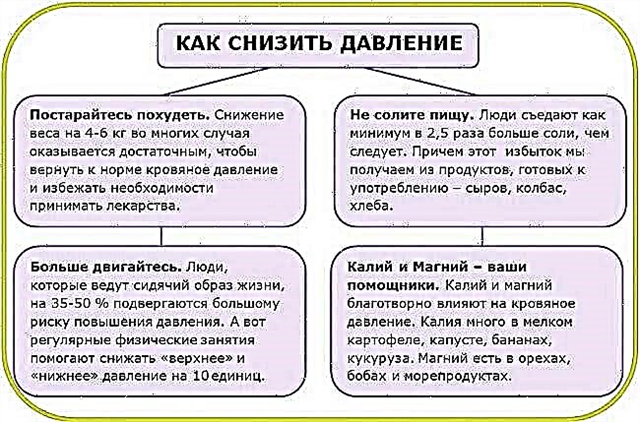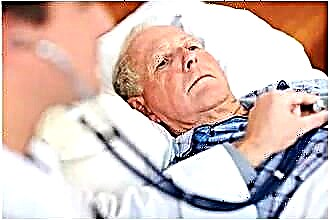Three decades ago, ventricular parasystole, due to its poor study, was considered a rarity and belonged to the so-called "complex rhythm disturbances." And only by the 80s of the last century fundamental information on this type of arrhythmias was published. However, the question of how often parasystole occurs in the population remains controversial. It is rather difficult to clarify it due to the difficulties in diagnosing pathology.
What it is
Ventricular parasystole is a type of arrhythmia, in which, in addition to a normally functioning rhythm regulation system, an additional pathological focus also produces electrical impulses. This is the reason for double rhythm formation, manifested in two forms of arrhythmia:
- extrasystole (extraordinary heartbeats guided from the pathological focus);
- episodes of tachycardia (increased heart rate).
An additional focus of rhythm formation is called the paracenter. Electrical impulses are constantly emanating from it, the frequency of which can vary in the range of 20 - 60 per minute. Parasystole occurs not only in patients with cardiac pathology, but, occasionally, in practically healthy people, and even in active professional athletes.
One of the studies involved 200 patients with ventricular parasystole, in the age range 17 - 77 years. Of these, ischemic heart disease was detected in 54% of patients; hypertension - in 32%; mitral valve prolapse - in 8%; without organic cardiac pathologies - 6%.
Reasons for the appearance
All causes of the development of the disease are divided into two groups:
- cardiac;
- extracardiac.
If during the examination it is not possible to find any reasons for the development of such an arrhythmia, then we are talking about idiopathic parasystole.
Cardiac causes include:
- cardiac insufficiency;
- inflammation of the myocardium;
- heart defects;
- heart attack, etc.
Extracardiac:
- hormonal disorders (hypo- and hyperthyroidism, adrenal pathology);
- overdose of certain medications;
- imbalance of electrolytes in the blood;
- disorders of the autonomic nervous system;
- hyperglycemia;
- anemia.
Thus, this type of arrhythmia can be caused by various reasons, including those not directly related to the heart. I would like to advise a person who has experienced symptoms characteristic of parasystole, without delay, to consult a therapist or cardiologist.
Symptoms and Signs
Parasystole can proceed without any disturbing sensations and be detected by chance during an electrocardiographic examination, prescribed for completely different reasons.
But the disease can manifest itself with a wide range of symptoms:
- attacks of tachycardia develop, accompanied by light-headedness;
- the heart "tosses and turns", "pushes", "freezes";
- performance falls;
- fatigue increases;
- heart rate increases;
- worried about weakness;
- dizzy;
- my heart hurts.
Ventricular parasystole is distinguished by three main features:
- The presence of confluent complexes, the formation of which is based on impulses simultaneously emanating from the main pacemaker and the ectopic focus, exciting different parts of the heart muscle.
- Fluctuations in the intervals from the previous complex to extrasystole - more than 0.1 sec.
- The law of "multiplicity", which states that the smallest distance between the parasystoles is associated by a simple mathematical relationship with other, longer intervals of this kind.
The first and second signs can be detected on the ECG with a longer recording, but the third, only with daily monitoring, with further careful decoding.
Diagnosis: ECG and Holter signs
A complete examination of a patient with ventricular parasystole includes the following techniques:
- Anamnesis: family, life, illness.
- Physical examination.
- Blood tests: general, biochemical, hormonal profile.
- Urine tests: general.
- ECG studies: simple ECG, under stress, CMEG, EchoCG.
- MRI.
- EFI.
In simple cases, it is enough to conduct an electrocardiographic study, on which all three specific signs of pathology will be visible.

The ECG speed is 25 mm / second. The distances from the normal wave to the pathological wave are not the same, and the difference will be more than 1/10 of a second, which indicates that the parasystole is not associated with sinus contractions. There are confluent complexes, with the simultaneous arrival of sinus and ectopic impulses.
In the image, the upper arrows indicate the parasystoles, and the lower ones indicate the places where they would have been if it were not for the refractoriness (decrease in excitability) acquired by the myocardium after sinus contraction.
The middle line contains three parasystoles in a row, the last of which is the confluent complex.
The second ECG is slightly different.

In this case, sinus rhythm is much more frequent than parasystole, ECG signs of arrhythmia are therefore different. In particular, two pathological complexes in a row are not registered.
Separately, I would like to point out the presence or absence of the third electrocardiographic sign of ventricular parasystole - the law of "frequency". It is not always detected, or rather, only in 29% of cases. Several circumstances interfere with its manifestation at once:
- the imposition by the sinus node of its rhythm to the paracenter (PC);
- blockade of entry into or exit from the PC;
- modulation of the PC work cycle;
- temporary elimination of the PC;
- arrhythmia of the PC;
And in 8% of cases, the reason for the absence of the third feature remains unclear. Due to such unreliability of the "law of multiplicity" in the diagnosis of ventricular parasystole, it can be neglected.
Treatment: when and how
Treatment of parasystole includes not only the normalization of the rhythm, but also the elimination of the disease that caused the disorder.
All therapeutic measures are subdivided into the following:
- non-drug;
- medicinal;
- surgical;
- preventive.
Drug-free treatment
The patient should change a lot in his life: eat healthy food a little, but often - up to 6 times a day; quit smoking and alcohol; sleep long enough.
Drug treatment
The patient is prescribed the following pharmacological drugs:
- medicines that support normal metabolism in the heart muscle;
- containing omega-3 polyunsaturated fatty acids;
- antiarrhythmic drugs;
- B-blockers.
Specific medicines and their dosage are prescribed by the attending physician after passing all the necessary diagnostic procedures.
Surgery
Surgical intervention is carried out in the presence of strict indications for it:
- poor tolerance of arrhythmia;
- ineffectiveness of taking antiarrhythmic drugs;
- the presence of complications when taking prescribed medications;
- undesirability of prolonged use of medications.
In these cases, ventricular parasystole can be managed with radiofrequency ablation.
Preventive actions
As you know, preventing the development of a disease is much easier than treating it. To minimize the likelihood of parasystole, you need to adhere to the following recommendations:
- reduce the consumption of alcoholic beverages to the equivalent of 30 ml of ethyl alcohol per day;
- enrich your diet with fresh herbs and fish dishes;
- exercise for half an hour daily;
- eat less meals containing animal fats;
- observe the work and rest regime;
- eliminate stressful situations;
- control weight;
- do not overeat;
- no smoking.
In addition, one should deal with the prevention of diseases that can provoke the development of ventricular parasystole.
Case from practice
37-year-old patient S. was under outpatient supervision for several years with a diagnosis of ventricular parasystole. The disease was difficult to tolerate, the treatment did not bring a visible effect. It was not possible to identify pathologies capable of provoking parasystole.
S. was anxious and suspicious. She was asked to consult a psychotherapist and undergo endocardial EPI. The patient refused both of them. The ECG showed single and paired gastric parasystoles.
In a calm state, arrhythmia did not appear. The patient was prescribed B-blockers, which were effective; however, after stopping them, the parasystoles returned.
An interesting situation was revealed after the daily monitoring. While the woman was driving quietly in the car, a sinus rhythm was observed. And now she gets into an accident, and immediately there was parasystolic trigeminia, heart rate rose to 150 with paroxysmal persistent recurrent ventricular tachycardia.

After the situation returned to normal, the rhythm changed to sinus tachycardia with single ectopic complexes, at different intervals in front of them.
After analyzing these data, the prescriptions were changed: the dose of B-blockers was reduced and Grandaxin, a daytime tranquilizer, was added. The effect was not long in coming. The patient was advised to consult a psychotherapist and a possible radiofrequency ablation.



